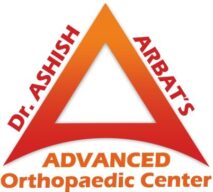Osteoarthritis (OA) is one of the most common types of arthritis that is also known as a degenerative joint disease (DJD) or wear-and-tear arthritis.
This chronic joint disease usually occurs due to the biochemical breakdown of cartilage or deformity in the synovial joints.
Cartilage is a firm, rubbery, flexible protective tissue covering the bones’ ends in a joint.
The primary function of the cartilage in the joints is to reduce the friction between bones and also act as a shock absorber.
But due to OA, the cartilage breakdown (diminish), and the bones start rubbing each other, leading to pain, stiffness, and more.
The breakdown of cartilage can cause two types of OA, depending on how the breakdown happens.
Contents
Types of Osteoarthritis
There are two major types of Osteoarthritis (OA), including:
Primary Osteoarthritis
It is the common type that usually occurs naturally as people age, especially after the age of 60 years.
Secondary Osteoarthritis
It occurs when the cartilage gets a specific trigger due to trauma, injury, and other risk factors.
It most commonly occurs in sports people or players, especially who play contact sports like football, basketball, hockey, and more.
Talking about the risk factors (causes of osteoarthritis), let’s see the major ones in the following section.
Risk Factors for Osteoarthritis
There are several factors that can cause OA, including:
- Age (55 years and older).
- Gender (more common and severe in women.).
- Obesity (weight puts extra pressure, especially on hip and knee joints).
- Injury in joints.
- Joint abnormalities (born with or developed in childhood).
- Genetic factors (may increase the risk at an early age).
Thus, these are the several risk factors that can cause osteoarthritis to develop in many joints such as the hand, knee, hip, etc.
Now, how’ll you know if these risk factors have affected your joints? For that, you must have symptoms associated with it.
Osteoarthritis Symptoms
According to the best Orthopedic doctor in Pune, the primary symptoms of osteoarthritis are pain and stiffness in the joints.
However, he also states some other symptoms that a patient can notice, and they are:
- Less flexibility.
- Reduced range of motion.
- Tenderness or discomfort when pressing on the affected areas.
- Inflammation.
- Notice popping sounds when you move your joints or bend.
- Feel difficulty and instability while standing.
- Swelling.
Thus, these are the symptoms of OA that differ from patient to patient, depending on their condition.
The pain that patients feel in their joints will increase daily and may cause severe joint problems. Moreover, you may feel your joints stiff after resting; they will get normal as you start moving.
Therefore, it is recommended to consider proper treatment of the joints after diagnosis ASAP.
Treatment for Osteoarthritis
Below are some of the treatments that you must consider to get rid of OA, even in old age.
Indeed, all of them are non-surgical treatments for osteoarthritis that you can even perform in the comfort of your home.
#1. Weight Management
As we’ve discussed already that obesity is a major cause of osteoarthritis, so if you’re obese, you must try to manage your weight.
Obesity (overweight) applies extra pressure on the joints, especially the knee and hip joints, that may break down the cartilage in the long run.
Research shows that losing weight (manage proper weight) can significantly improve pain and delay the risk of joint structural damage.
So, manage your weight according to BMI (body mass index) and prevent osteoarthritis.
#2. Exercise (Physical Activity)
Exercise is one of the most effective non-surgical treatments for osteoarthritis, even in old age.
Many patients think it will increase the pain in joints or may lead to further damage, but that isn’t true.
Studies have shown that exercising for 30-45 minutes (at least) a day can reduce the risk of OA and also help to manage its symptoms.
However, you need to consult a professional for a personalized and safe exercise routine.
Moreover, you must perform the exercises in front of a professional to avoid injury or further damage to the joints.
#3. Apply Heat and Cold
Applying heat and cold, also known as thermotherapy, helps to improve the symptoms of OA.
The heat helps in better blood circulation and muscle relaxation, which leads to faster recovery. On the other hand, the cold helps to decrease pain and swelling in the joints.
Moreover, it is highly beneficial for joint problems that occur due to acute injuries like a pulled muscle or injured tendon.
Note: Always keep something between the skin while applying heat and cold, such as a towel, bag, or more.
#4. Medication
OA causes severe joint pain that leads to an uncomfortable lifestyle, especially affecting sleeping.
To tackle this situation, doctors suggest having some nonsteroidal anti-inflammatory drugs (NSAIDs).
The most effective NSAIDs to reduce pain are ibuprofen (Motrin, Advil), naproxen (Aleve), and diclofenac (Voltaren).
These are some of the most recommended oral medicines for osteoarthritis to manage pain.
However, regularly taking these medicines isn’t recommended as they may cause some other health problems (Only if taken regularly).
Hence, these are some of the top non-surgical treatments for osteoarthritis that you must try.
Note: If you’re suffering from severe OA (pain) in the joints, you must consult the best orthopedic surgeon in Maharashtra for proper diagnosis and treatment.
Conclusion
OA is one of the most common joint problems (arthritis) that usually occurs in old age people because of the breakdown of cartilage.
However, there are some other risk factors that can cause OA, such as joint injury, obesity, gender, and more.
But it isn’t easy to predict if anyone is suffering from OA as it may not show immediate symptoms.
Keeping that in mind, we’ve discussed all the risk factors, symptoms, and treatments in the above sections.
Hope you find this informative and helpful! If you have any queries, you should ask in the comments or directly contact the best Joint Replacement Doctor in Pune.

